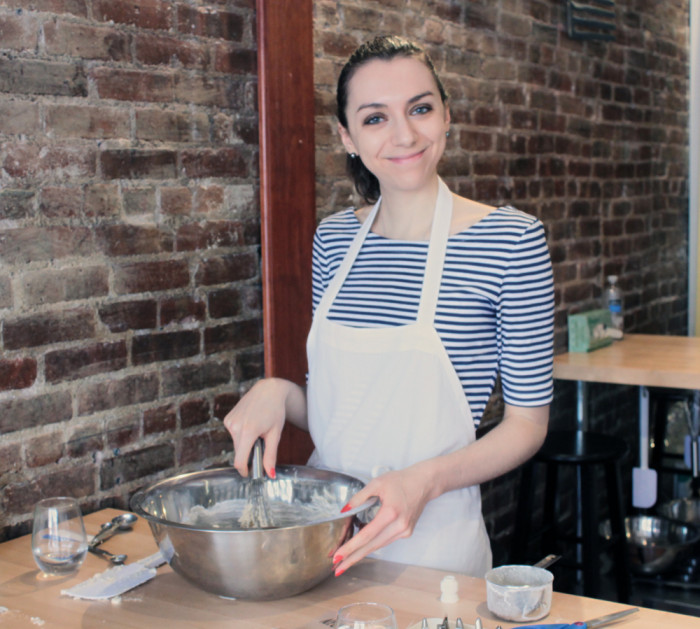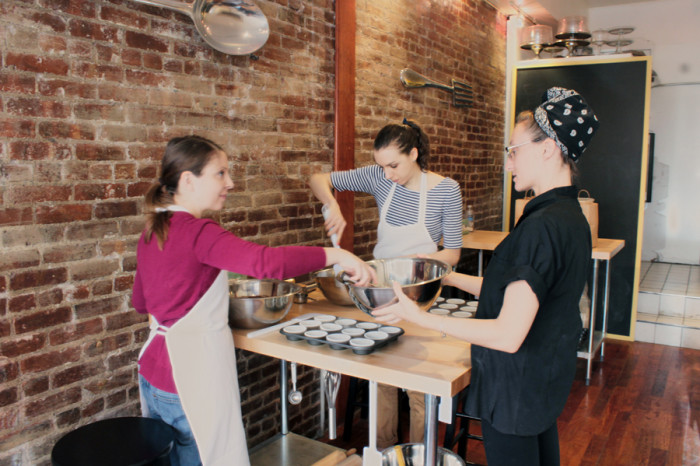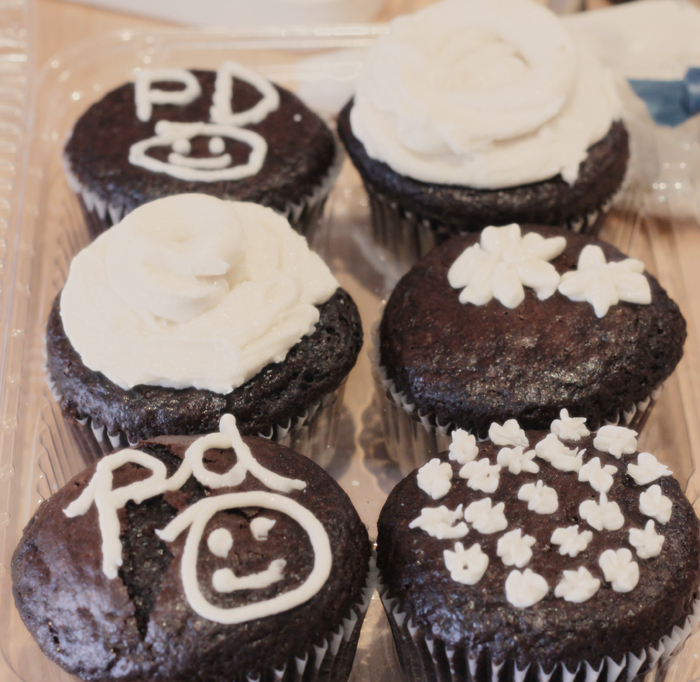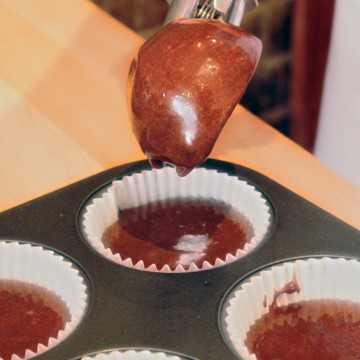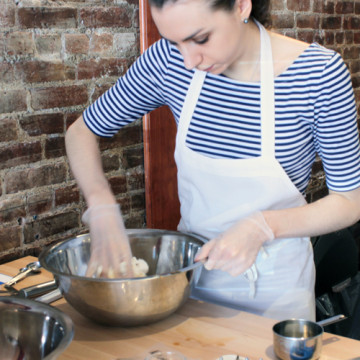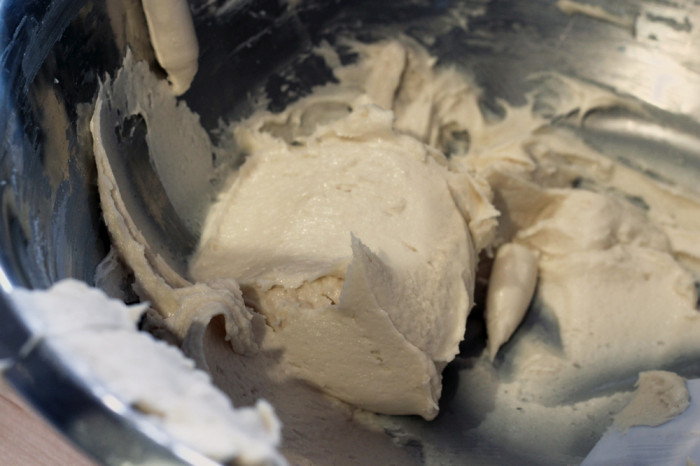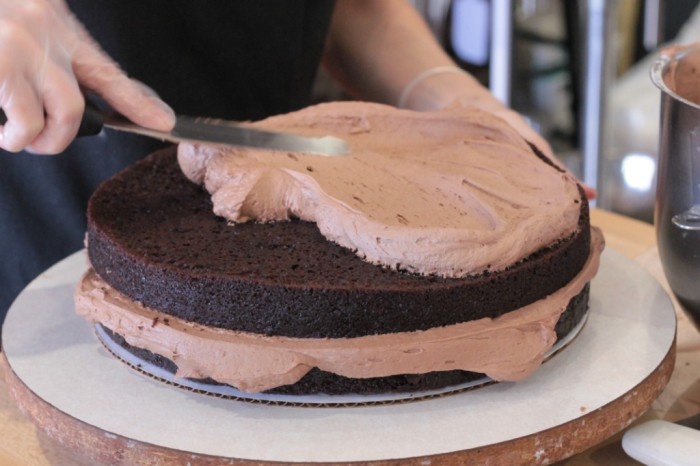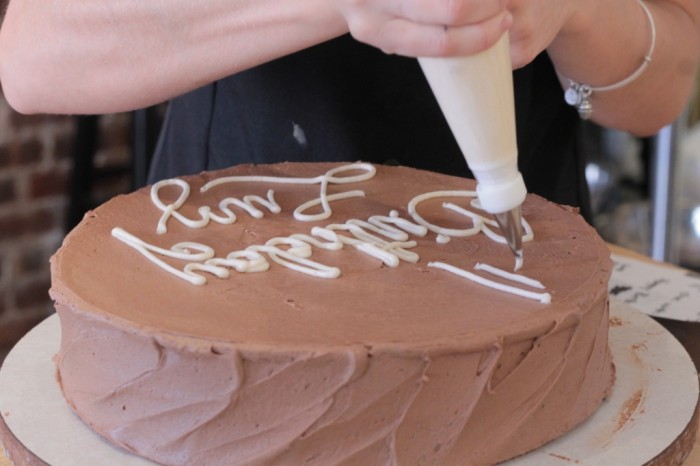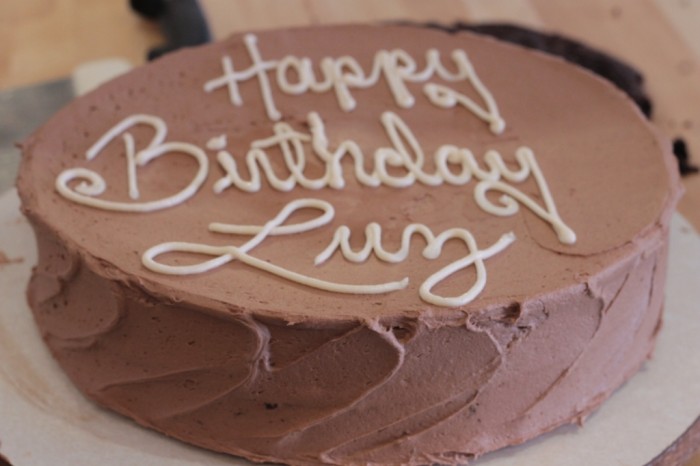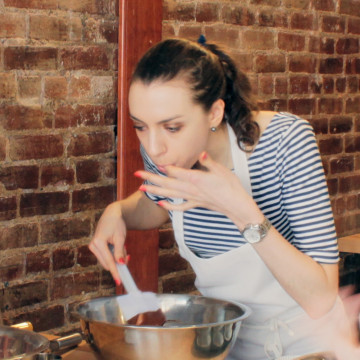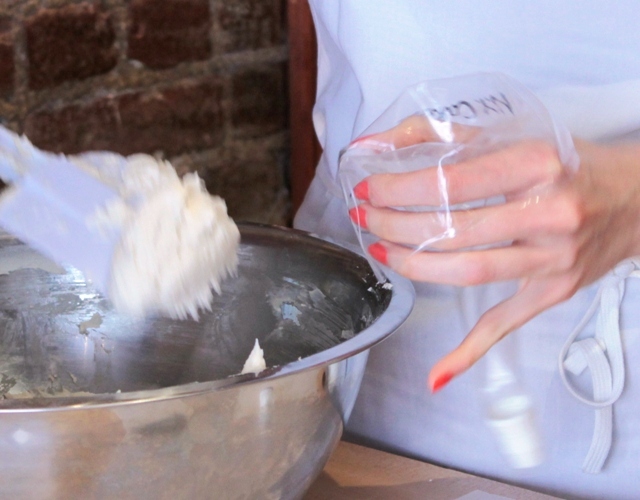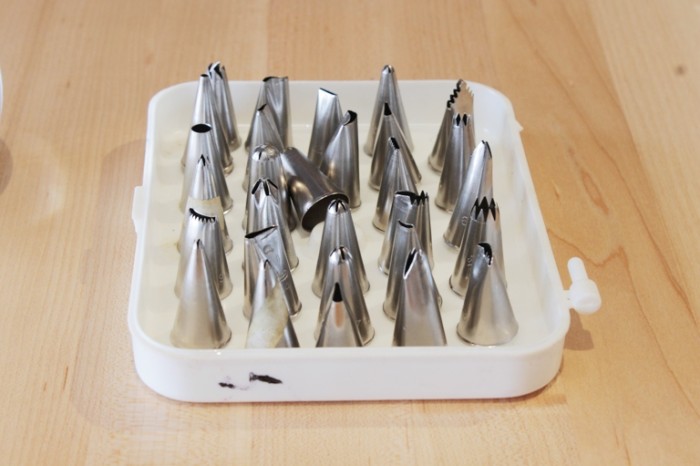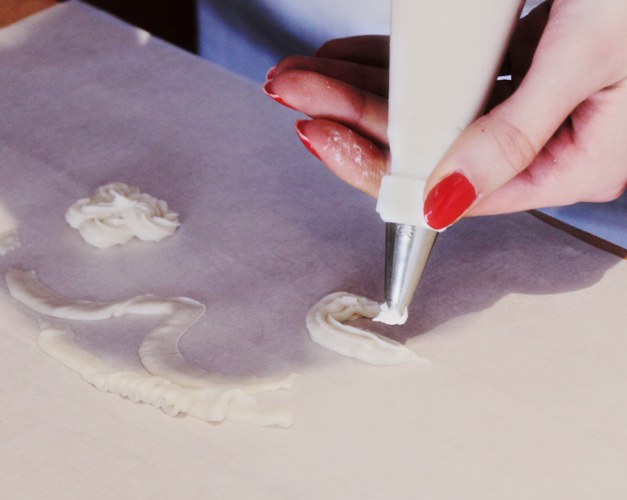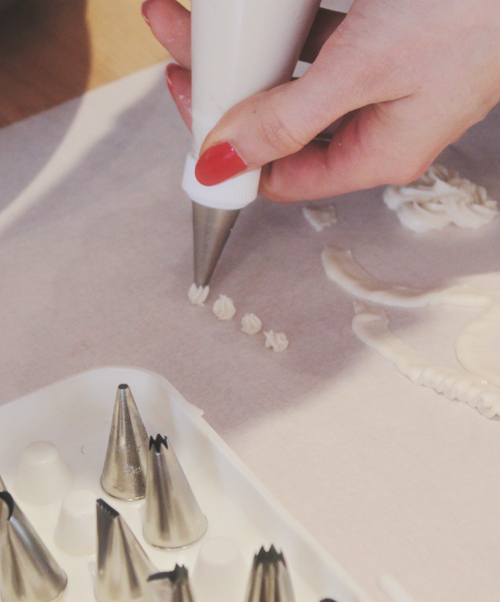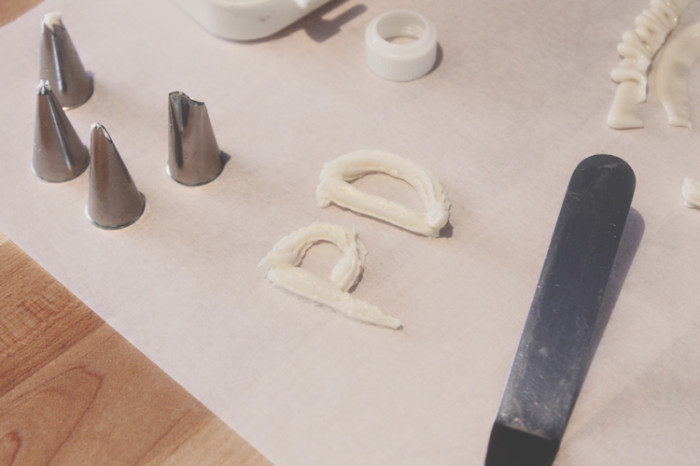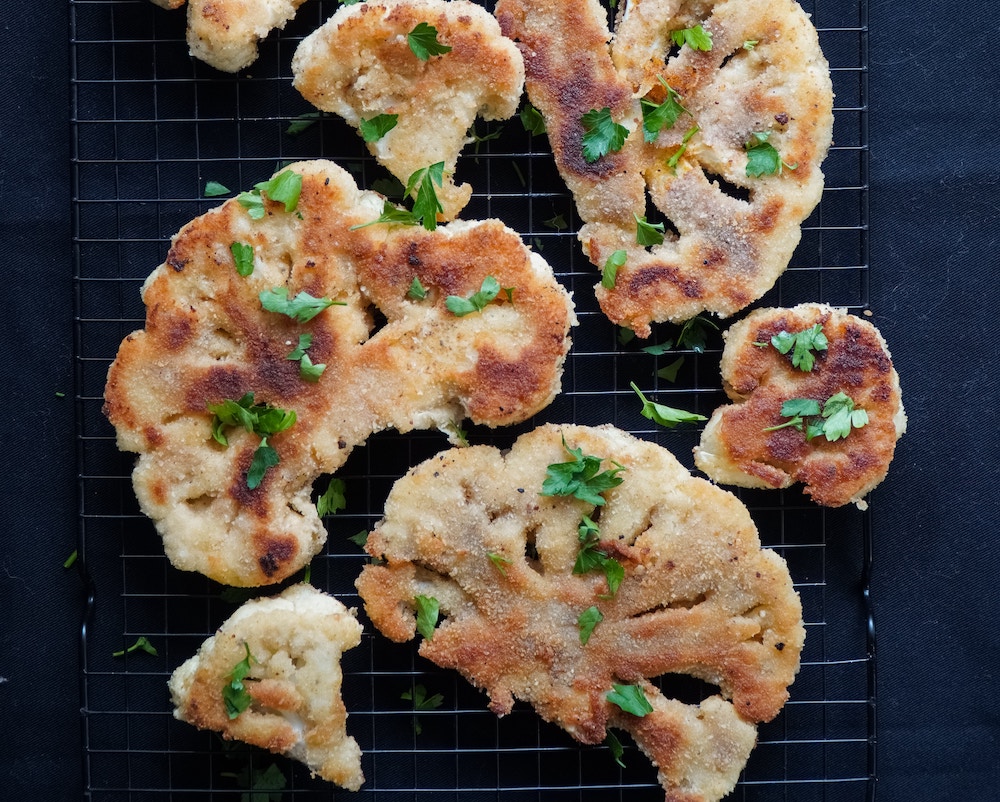It was only 10 AM and already in the high 50s—the first sign of seasonably warm weather in New York City this year. But when I asked Quinn Ventura if she’d be able to take a walk outside during a lunch break, she shook her head. She preferred to work straight through the day, no breaks, only to replenish her 1.5-liter bottle of Smartwater, three of which she drank per day.
It’s no surprise that Ventura possesses the work ethic and pace of the Energizer bunny. As the head pastry chef at Chelsea’s Blossom Bakery (174 Ninth Ave., 212-242-3339), she single-handedly invented all of the recipes for the all-vegan baked goods sold few blocks up at Blossom du Jour (259 W 23rd St). Now, she and one other baker also make all cakes, pies, cookies, and even cronuts that are whisked out the door of the wholesale/cooking class space (that doesn’t keep sweet-toothed passers by from sticking their heads in, though). Just last week, they added to their customer list Whole Foods, which carries Blossom confections at their Chelsea store. Oh, and she also makes everything by hand—no electric mixers. She’s proud of her slightly larger right forearm—what she calls her “Popeye muscle”—even though she tries her best to be ambidextrous when mixing batters and doughs and, yes, even frosting.
This March, Blossom began offering three different baking courses open to the public: Cupcakes and Cakes, The Art of Gluten-Free Baking, and The Perfect Pies.
Peaceful Dumpling cofounder, Juhea Kim, and I attended a weekend morning Cupcakes and Cakes session, and professional-level vegan baking tips I took away were just as satisfying as the dozen (well, minus two for immediate, necessary* tasting) chocolate treats, decorated (a bit shakily) with vanilla frosting, that we took home.
Here are some highlights of what Ventura shared from her kitchen:
– Not all flours are created equal. “Hard” flours have higher protein content (like All Purpose, Winter Wheat, bread, and Spring Wheat) and are ideal for sturdier baking, like breads. “Soft” flours (pastry and cake) are better suited for fluffy recipes: pies, tarts, cakes, and cookies. The same is true for their gluten free counterparts, most of which fall in the “soft” category. As such, you should always include xantham gum when baking GF to give the recipe more structure.
– Liquid sweeteners—like agave nectar, maple syrup, and organic brown rice syrup—are not straight substitutes for solid sugar. Check the proportions on the label of your sweetener’s container. Some fun facts: brown rice syrup has a low impact on blood sugar and therefore is great for people with diabetes. It also has a similar viscosity to honey, whereas agave is runnier—a tip I’ll remember not just for baking but for general use as well.
– If you use baking soda and vinegar as a vegan egg substitute (1 t. soda + 1 T. vinegar=1 egg), add the vinegar at the end of the recipe since this reaction works immediately. It is the ideal faux-egg for lighter recipes, like cakes, where fluffiness is desired.
– High fat non-dairy milks, like coconut milk, can stand in for heavy cream in recipes.
– Avoid replacements for butter like vegetable oil, which leaves a noticeable aftertaste, and choose instead 100% canola oil.
– Use ice cream scoop to add batter to cupcake liners.
– For the perfect creamy frosting, use cold (not room temperature) butter and/or or cream cheese substitutes (Blossom vegan frosting has both) and—get ready for it—mash it with your hands. In the absence of an electric mixer, trying to stir these ingredients with a spatula or whisk would be nearly impossible, so Ventura had us reach for gloves before pulverizing the contents of our mixing bowls. Then, stir in gently any sugar in equal increments to avoid covering yourself with white powder. At the end, power up your Popeye muscles and whisk the frosting briskly, stabilizing the bowl against your body—a technique that magically added a whipped lightness and eliminated lingering lumps of sugar, and made me grateful for all those forearm planks in yoga.
– Frosting a cake is simplest when the cake is cold and with the aid of a cake stand. If you don’t have one, make one! A plate resting atop an inverted bowl will allow you to spin the dish around to make an even layer all around, with the help of a straight or angled spatula.
– You can pipe frosting like a pro with a piping bag (also available in reusable varieties), or create a homemade piping bag with a humble Ziploc back with the corner snipped off. Fancy tips can help you make flowers, leaves, and stars, whereas a plain round tip is good for lettering/free-hand drawing. (See next page!)
– *Always taste! It will help identify right away any missing ingredients or adjustments for taste. Plus, a vegan pastry dough or batter is safe to eat raw, so there’s no reason to not take a lick or two, or three . . .
Next page – Step by Step instructions on how to decorate cupcakes like a pro!
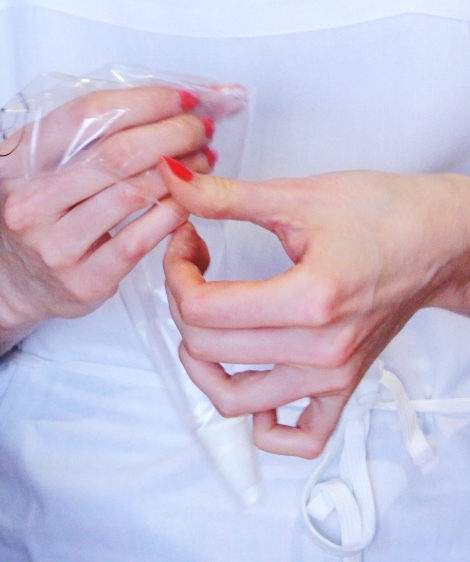
Step 1. Fit the white nozzle in the inside of the piping bag (you can use plastic or canvas). Cut off the tip of the bag, right where the nozzle rests.
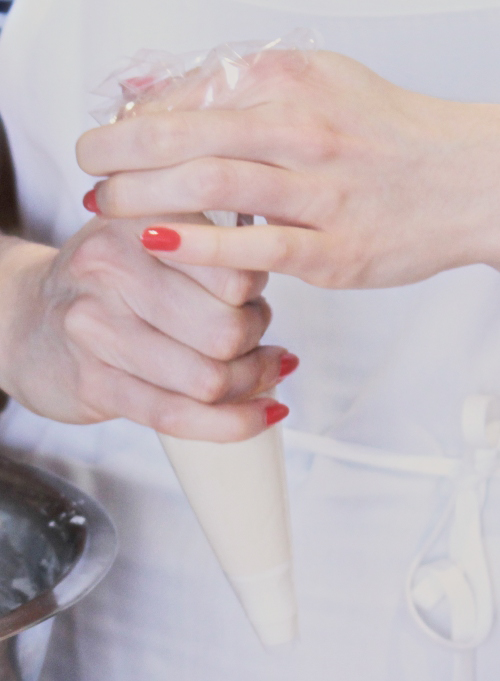
Step 4. When frosting is all the way at the bottom, fit the outer ring to the end of the bag and “burp” the frosting a bit to make sure it’s ready to come out.

Have fun with various tips on parchment paper before starting to decorate on cupcakes. Leaf piping tip…
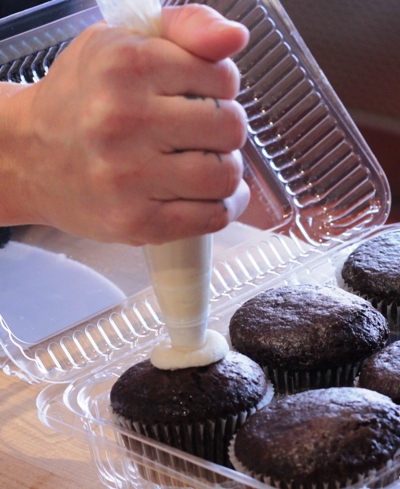
When you move onto cupcakes, try adding a base layer without any piping tip. Use pressure, not wrist movement, to spread the frosting
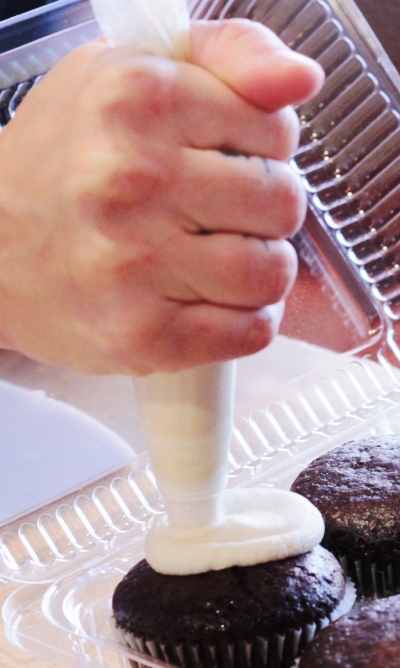
This pressure method results in smoother shape. You can leave as is, or layer with more fancy shapes using piping tips.
As eye-opening a class as it was, not all of Blossom’s secrets were revealed to us students–the chocolate frosting recipe remains a mystery. We’ll just have to keep stopping by the café to see what’s new from the oven. Their cronuts are said to be the best among this ubiquitous new pastry, but they’re not necessarily the next dessert trend in Ventura’s opinion—it’s hybrids in general. And who knows? Maybe with these tips, you’ll be the inventor of the new big thing in sweets.
For all of Blossom’s locations and to place an order, visit: blossomnyc.com
Also by Jennifer: Gluten-free Crispy Herbed Croutons
Indulgent “Fre-gan” French Toast
__
Photo: Peaceful Dumpling

